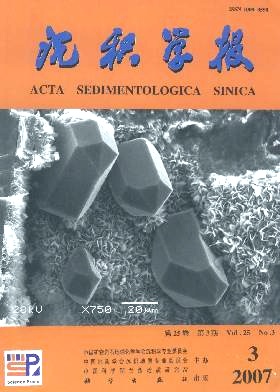Relation Between Eolian Accumulation and Modern Soil Development in the Southern Part of the Loess Plateau
- Received Date: 1900-01-01
- Rev Recd Date: 1900-01-01
- Publish Date: 2007-06-10
-
Key words:
- micromorphology /
- cultivated soil /
- JYC profile /
- Guanzhong areas
Abstract: A soil profile at the LGT site in the western part of the Guanzhong Basin was studied to illustrate soilforming process and micromorphological features of modern soil. Micromorphology of the thin sections is observed under a petrographic microscope and its image is quantificationally measured by LEICAL Qwin software. Results show that the minerals assemblage of every horizon is very similar, which is mainly composed of Q and Pl. Difference of C/F15μm ratio, mineral content and coarse features is obvious. Coarse grain of the Ap horizon is characterized by higher roundness (1.6361.818), lower aspect ratio (1.8611.909), small size (3541 μm) and some intrusive mass. Shape of coarse grain in BC horizon is characterized by lower roundness (1.8981.982), higher aspect ratio (2.2152.312) and big size (4247μm). BC horizon is characterized by abundant secondarycalcite quantity and slight amount unstable primary minerals such as Cc and Hb and Bi. Pedofeatures mainly consist of clay and calcite and amorphous Fe. Ap horizon is characterized by abundant secondarycarbonate and earthworm excrement and slight amount residual clay. Abundant needleshaped secondary calcite minicrystal is observed in the Ap2 horizon. There are little secondary clay and various secondary calcites in BC horizon. Comparability coefficient, between modern soil and Malan loess L1, is 0.81050.8951 in Ap horizon and 0.90510.9352 in BC horizon, respectively. All the results in this study suggest that Earthcumulic Orthic Anthrosols consists of both upper Ap horizon(040cm), which indicated that loess dung and eolian dust deposition and cultivation occur simultaneously in the process of Ap horizonformation since 2000 years, and lower BC horizon(4075cm), which is aeolian sedimentation in relative aridity period during late Holocene. Abundant needle shaped calcite suggested shortterm stable and dry environment.
| Citation: | PANG Jiangli. Relation Between Eolian Accumulation and Modern Soil Development in the Southern Part of the Loess Plateau[J]. Acta Sedimentologica Sinica, 2007, 25(3): 417-423. |






 DownLoad:
DownLoad: